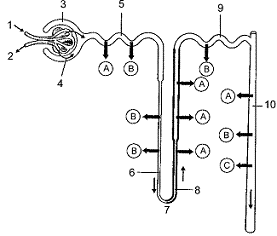Smallpox is considered a serious potential biological weapon, whereas anthrax has been successfully used as one. Compare and contrast their potential with regard to the criteria for assessing biological threats
What will be an ideal response?
The smallpox virus causes serious illness with moderate to high fatality rates. The virus is highly contagious by contact and aerosols, and it is contagious before clear signs appear. The virus can persist on fomites and infect persons who come in contact with them. Although a vaccine exists, the majority of the world's population is currently unvaccinated. Consequently, once released, the virus will spread rapidly. However, there is no natural source for the virus, so a person or persons intent on using it as a weapon would have to have special access and facilities to be able to produce much virus. Additionally, post-exposure vaccination is effective in producing immunity, so the resulting epidemic could be controlled once recognized.
The agent of anthrax, Bacillus anthracis, is an animal pathogen and a common soil contaminant. The organism can be easily isolated from contaminated soil and is not difficult to culture. The disease is not transmissible from person to person, so only the people exposed to the initial release would be at risk. However, the bacterium produces endospores that can be stored for long periods of time and released as a dust contaminant in airways or contact contaminant on fomites. Public perception of anthrax is that it is a very dangerous weapon. Initial respiratory symptoms are similar to other bacterial pneumonias, so proper diagnosis may not be made until the fatal toxemia develops. The current vaccine is expensive and does not produce immunity until after several boosters have been administered; therefore, it is not useful for controlling disease after a release. Natural B. anthracis is susceptible to most antibiotics, so treatment in cases of early detection is effective. Authorities are concerned about the potential for the development of antibiotic-resistant strains.
You might also like to view...
What type of thinking is required?
What will be an ideal response?
Which of the following is (are) characteristic of
arteries? a. rapid transport vessels b. large diameter c. pressure reservoirs d. low resistance vessels e. all of these
Which of the following hormones stimulates an increase in basal metabolic rate as a tropic hormone?
A) prolactin B) follicle-stimulating hormone C) thyroid-stimulating hormone D) adrenocorticotropic hormone
Refer to Figure 48-3. Reabsorption of water occurs at the points labeled:

a. 3 and 9.
b. 5 and 8.
c. 6 and 10.
d. 8 and 10.
e. only 10.